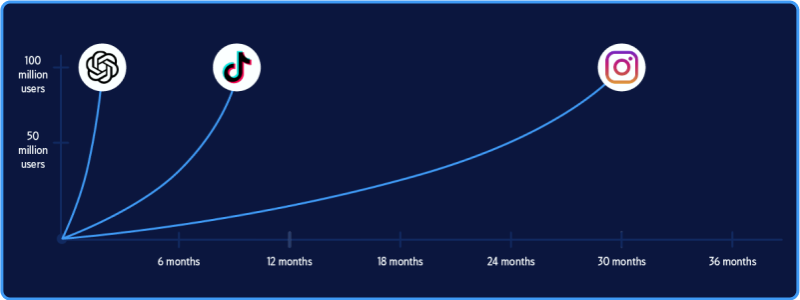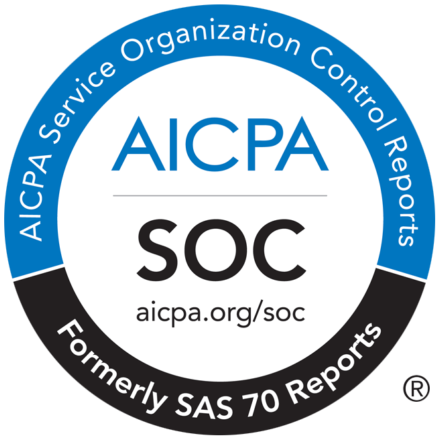AI and Education
Since the release of ChatGPT in November of 2022, AI-generated content continues to garner concern, especially regarding its impact on education.
Globally, educational institutions continue to discuss AI’s growing popularity: Is this the end of the written assignment? What are the rules surrounding AI-generated content? Is it original, or is it cheating?
The concern is viable; ChatGPT reached 100 million users in less than three months, a milestone that took TikTok over six months to hit, and Instagram 30 months. A 2023 survey conducted by Study.com found that just over one in four (out of 200+) teachers have already caught at least one student cheating using ChatGPT.
Months following the release of ChatGPT, more AI chatbot models have been introduced, including GPT-4 and Bard from Google. As a result, concerns surrounding the use of AI in student assignments and what it means for education continue to mount.
We’ve entered a new era of technology that will only continue to grow and evolve. What can educators do to leverage AI-generated content as a potential learning tool, much like the calculator? And how can AI content detector tools support learning and encourage academic integrity?
The Prevalence
In January and February of 2023, we conducted a study comprising anonymized data from tens of thousands of college and high school organizations worldwide using Copyleaks. The study sought to answer the question: How prevalent is AI-generated content in education?
January and February 2023 Summary Findings:
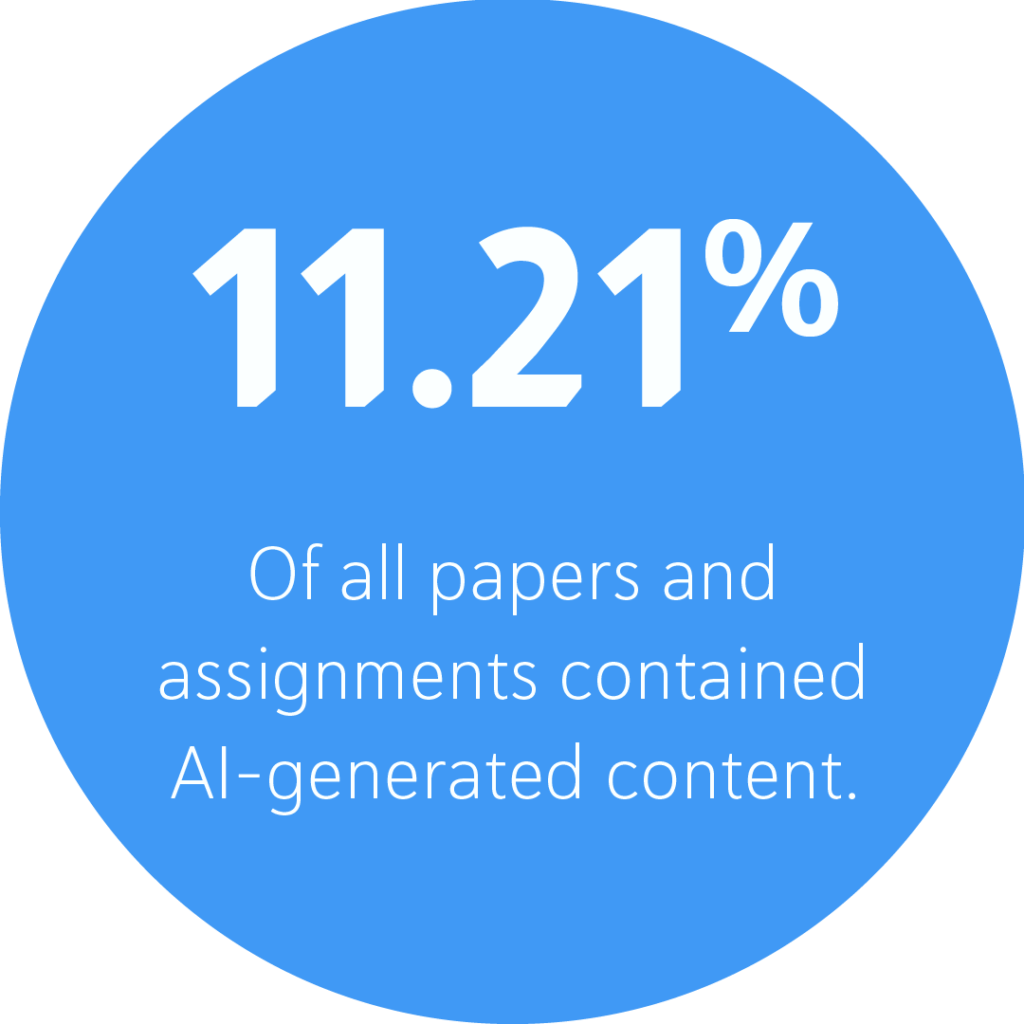
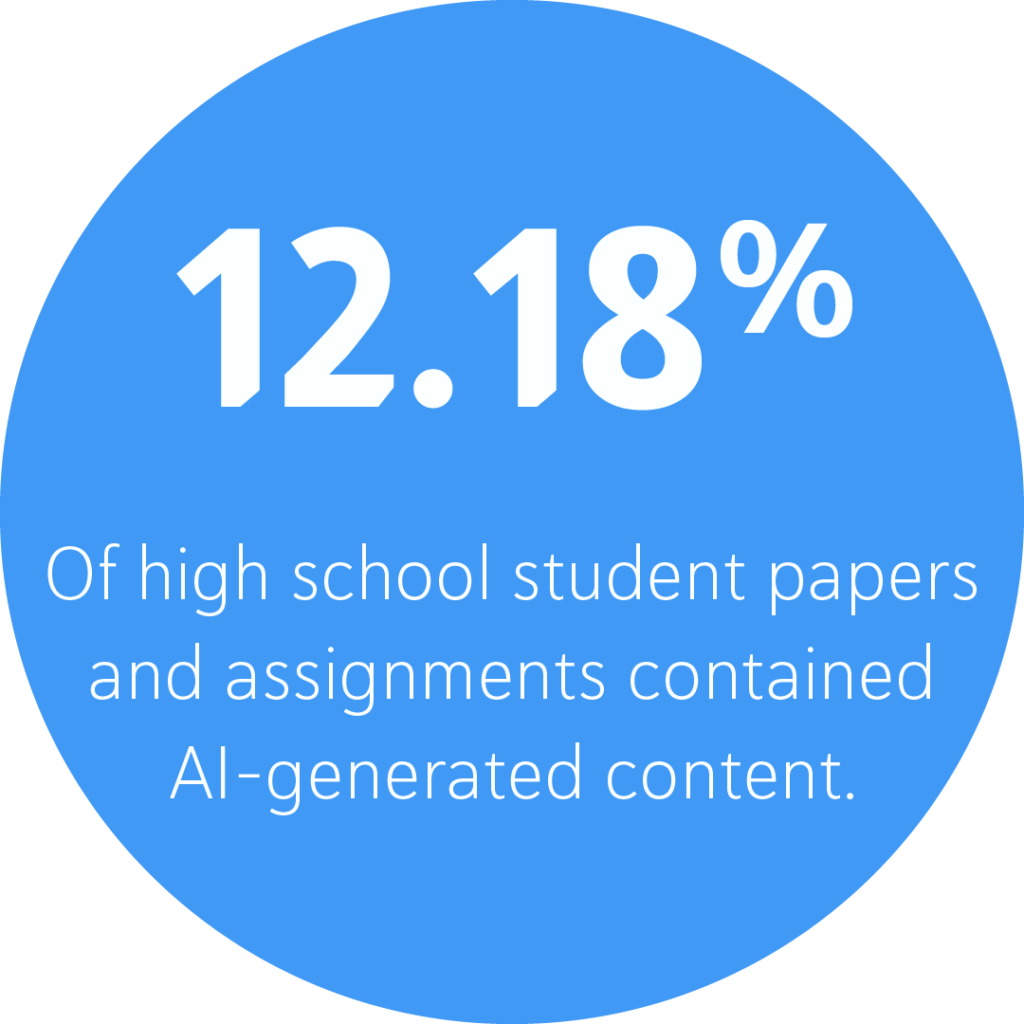
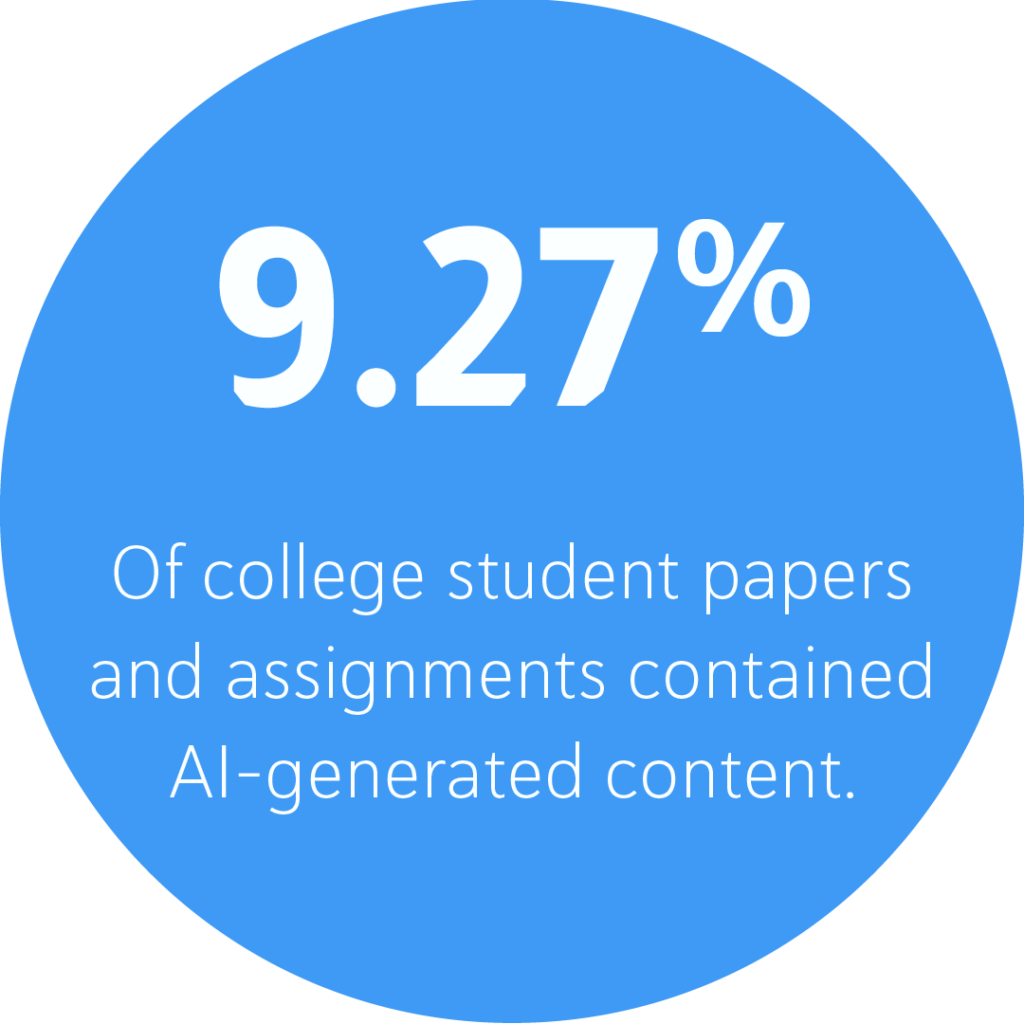
Percent of Papers and Assignments Containing AI-Generated Content by Country
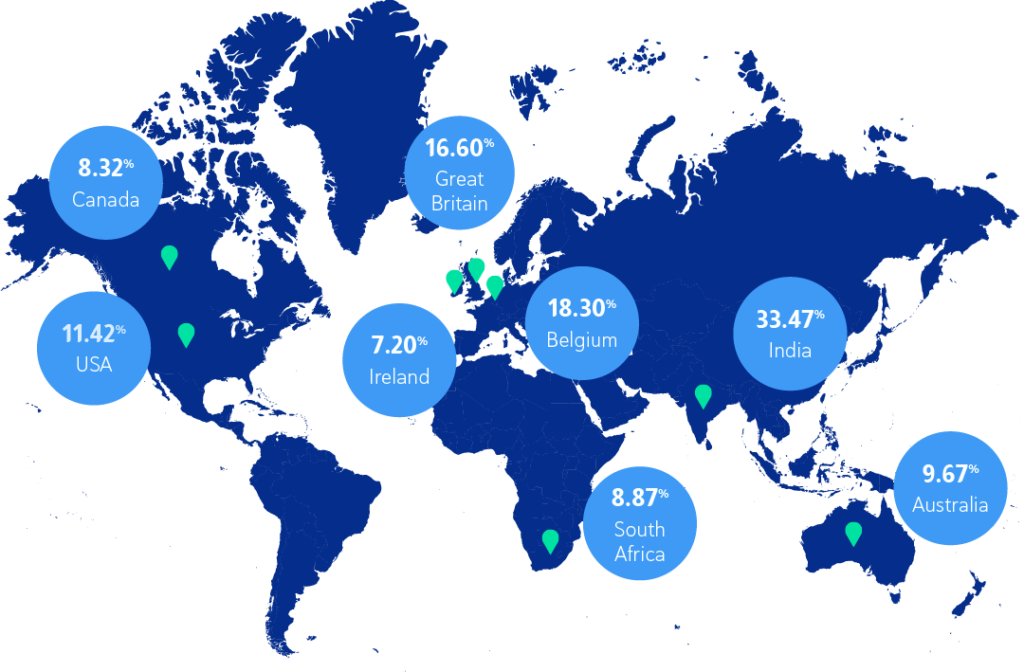
The Highest and Lowest Use of AI-Generated Content
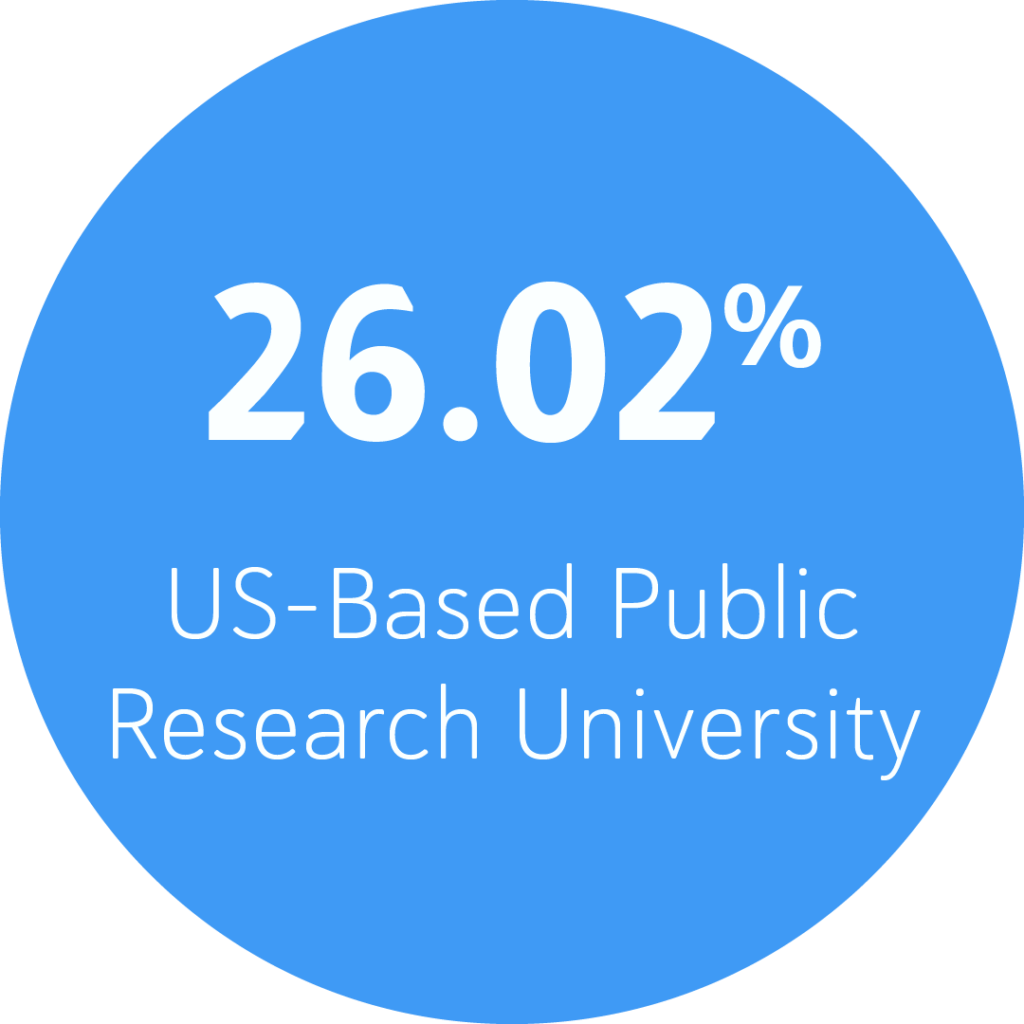
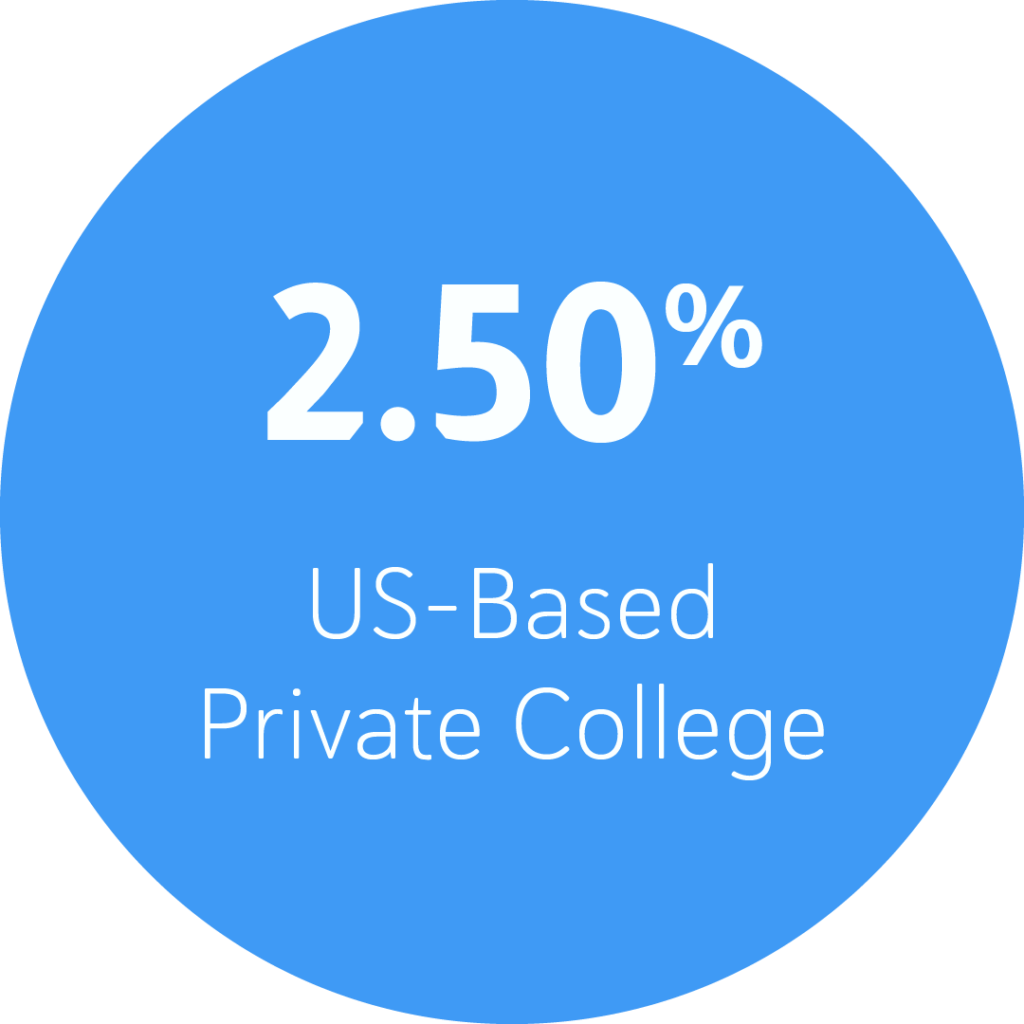
Month-Over-Month Change in the Use of AI-Generated Content
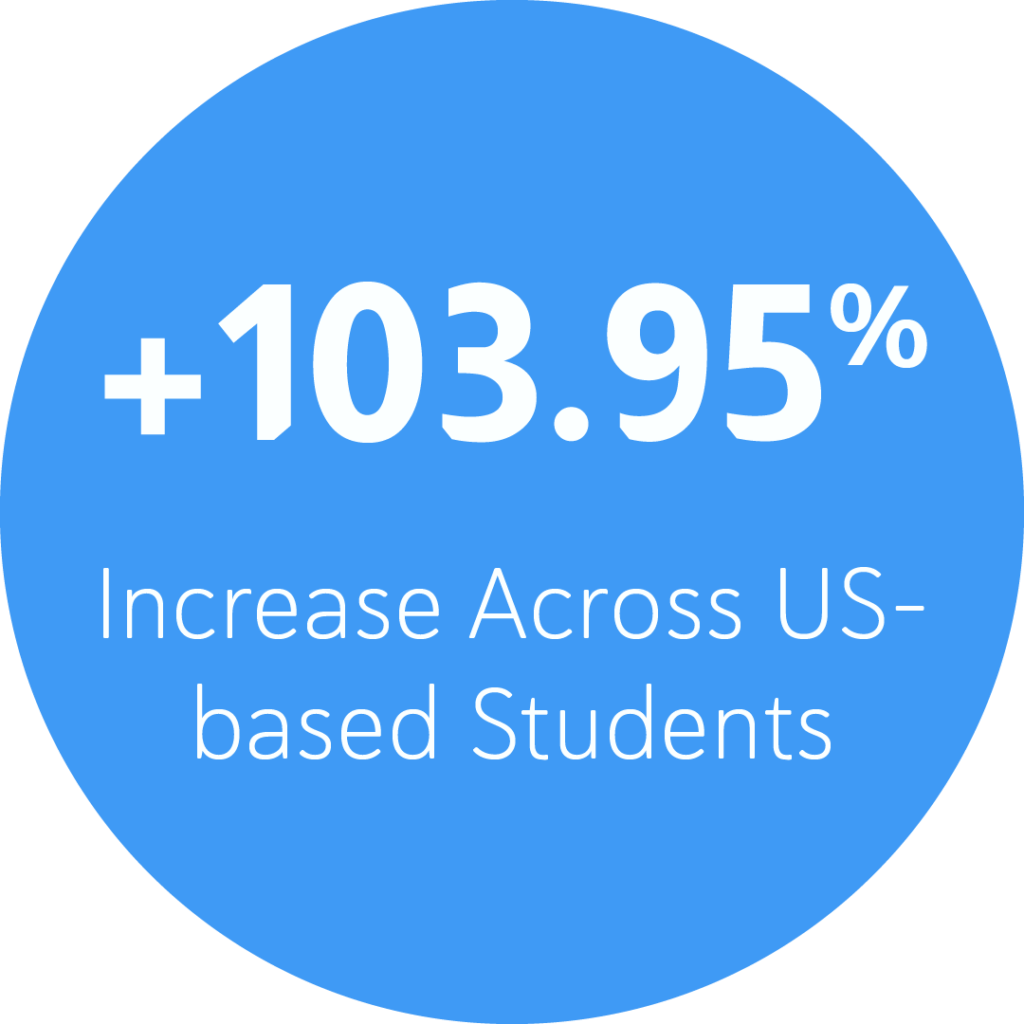
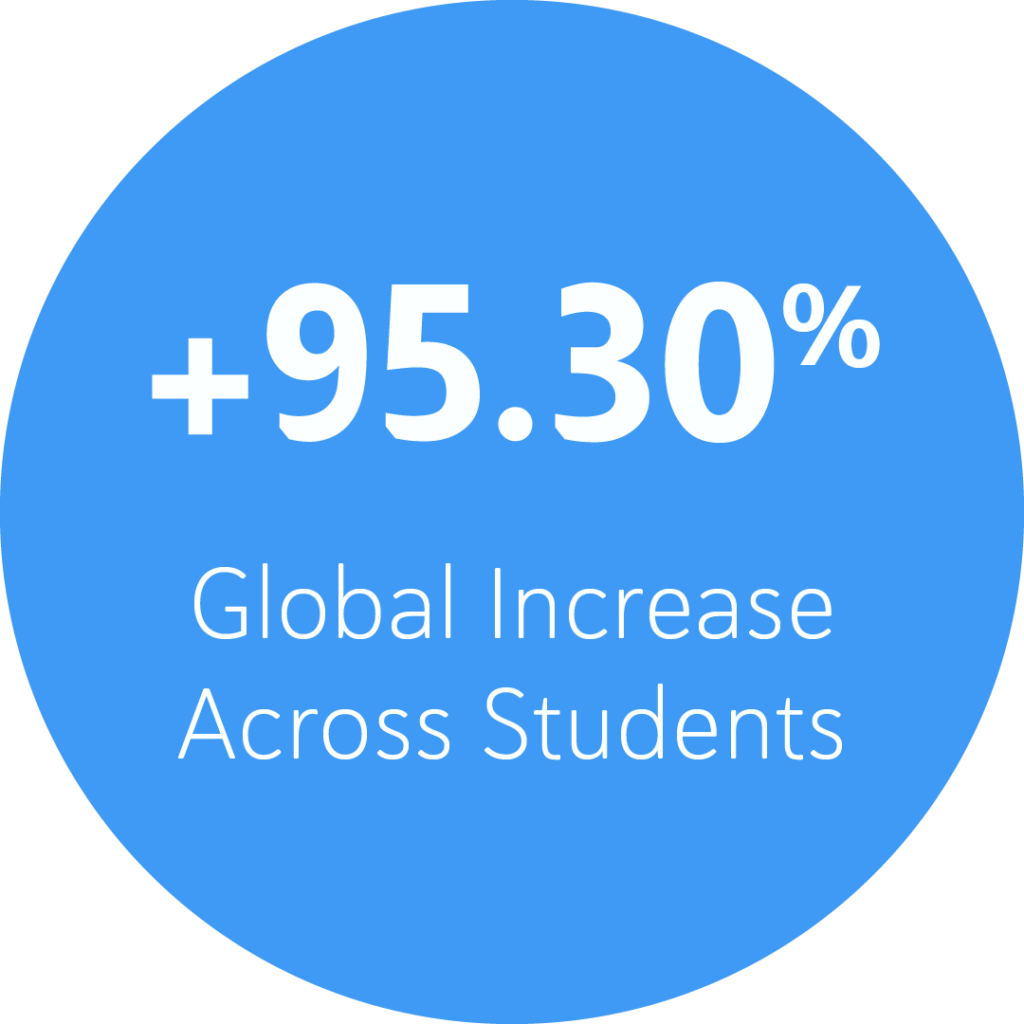
Even after being told their assignments would be checked for AI-generated content,
month-over-month there’s been a significant increase among high school students…

…and a noticeable decrease among college students, who were also
informed about their assignments being checked for AI-generated content.

The decrease has been consistent across all college types within the United States.
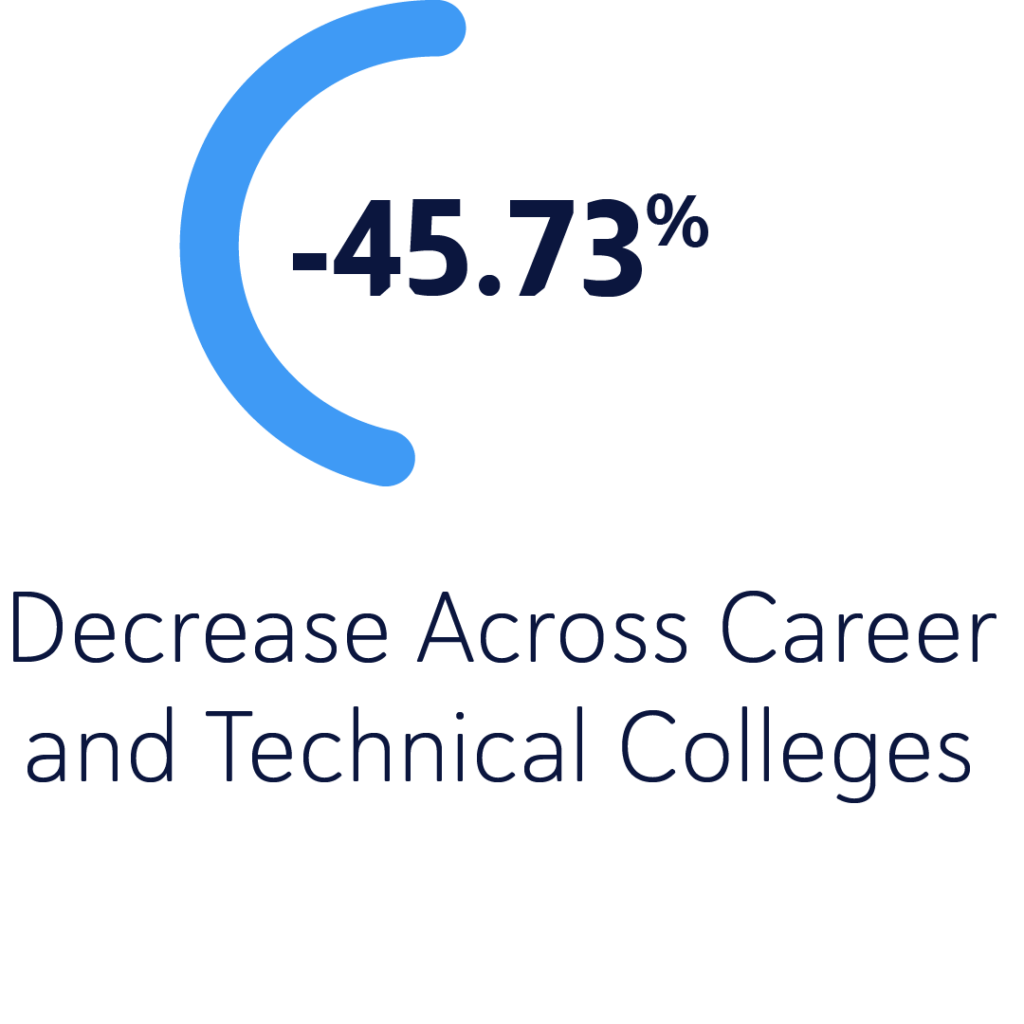



To gauge trends following the initial data collected during the first two months of 2023, we compared close to a million high school and college assignments submitted to Copyleaks between February and March of 2023 across the globe, all of whom knew their institute was using an AI content detector.
March 2023 Summary Findings:


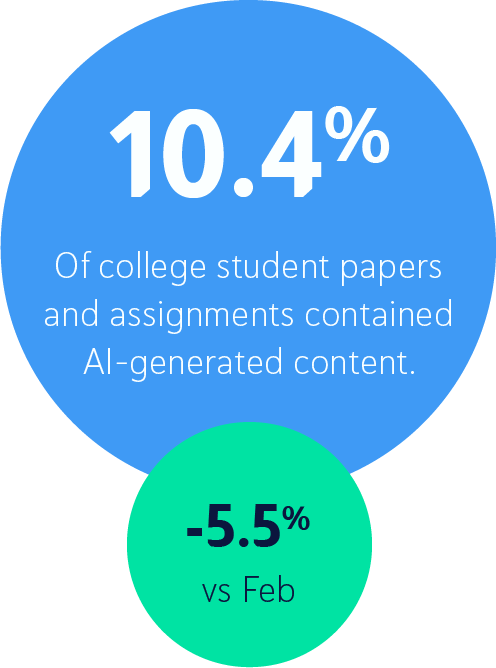
Percent of Papers and Assignments Containing AI-Generated Content by Country

The Highest and Lowest Use of AI-Generated Content
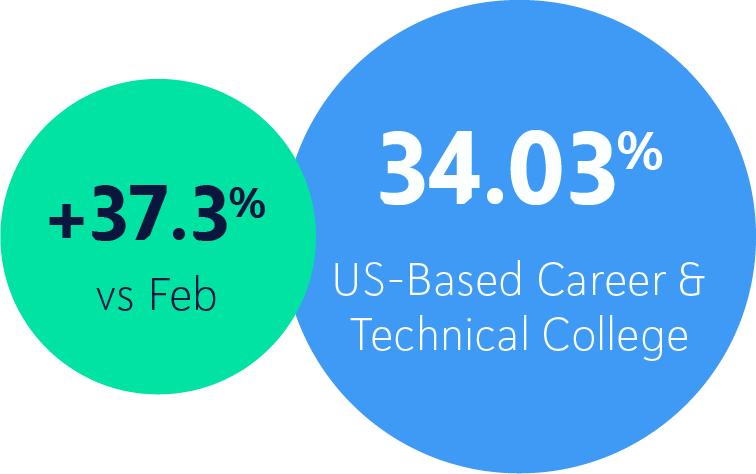
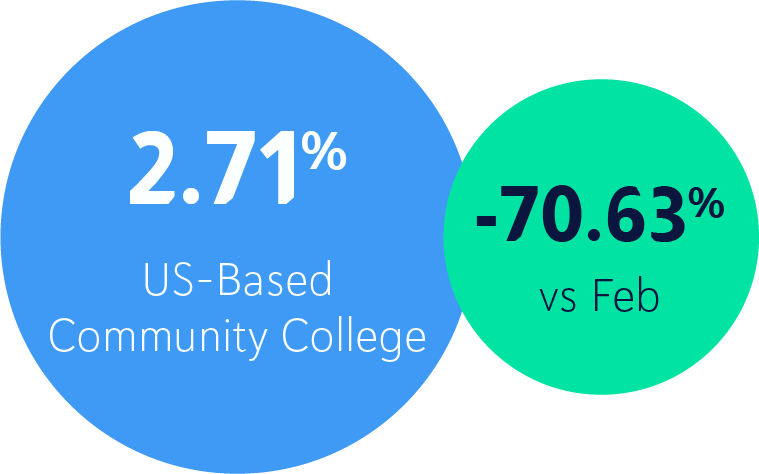
There’s also been a significant decrease among
US-based students in March compared to February.
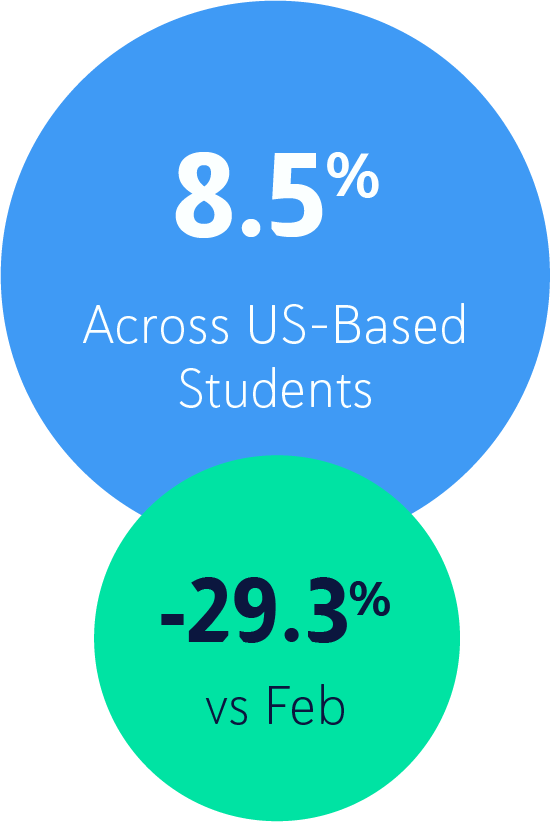


The decrease has also been consistent across college types within the United States.
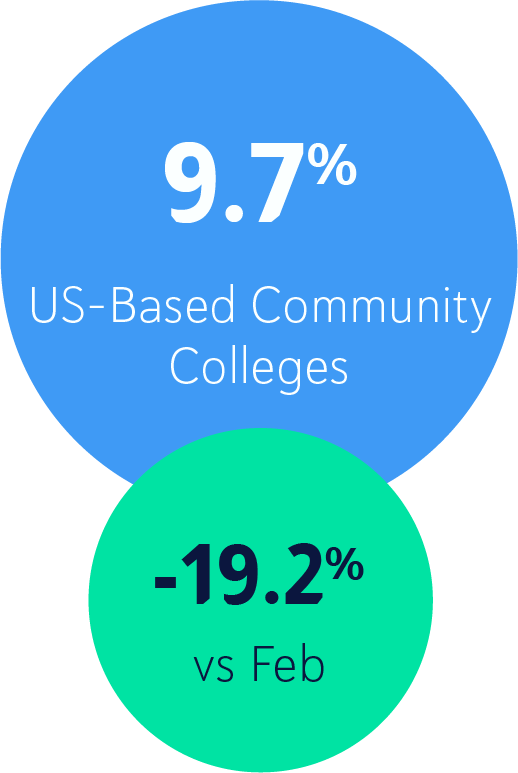
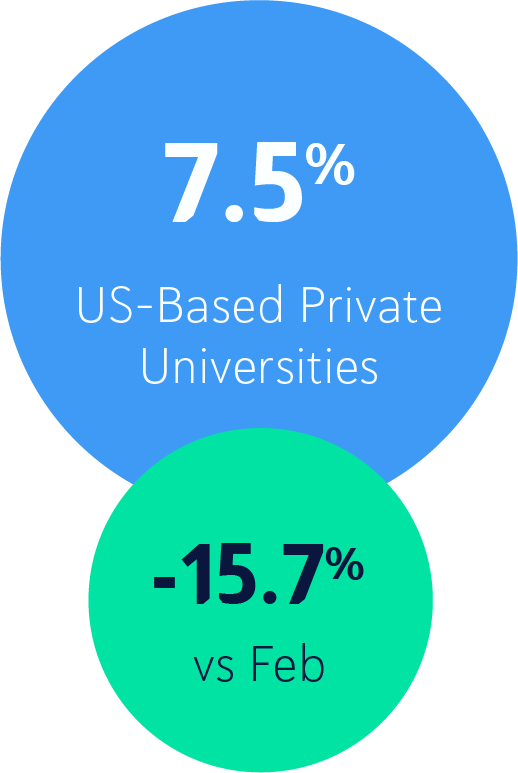

What We’ve Learned
- The Role of AI Content Detectors
There’s a necessity for continued education around the role of AI-generated content. For instance, students should learn to set boundaries regarding when to use it. But as the March data from Copyleaks reveals, the presence of an AI detector can be a helpful deterrent. Fact-checking and verifying all online content and student assignments through AI content detectors can help stay ahead of AI content generators and set boundaries.
First, looking at AI content from the text level, not just a whole document, is essential. Some students use AI chatbots as templates, editing the AI-provided text and interspersing their content. So the finished assignment might appear original, but the copy written by AI is mixed in with the student’s content. Whether an educational institution considers this cheating or not is up to them.
Nevertheless, the insight AI detectors provide of interspersed content and other forms of AI text that may appear helps provide the necessary data for educational institutions to decide where AI-generated content fits into their learning environment. - Establishing guidelines around usage
AI content generators will not be going away anytime soon, if ever. They are more likely to continue to improve over time. And as the Copyleaks data shows, students will utilize AI chatbots.
Just as with the calculator, spell check, and other tools utilized today by students, finding the place for AI-generated content in the learning process is encouraged. Establishing rules regarding the use of AI in education is a crucial step, including finding ways to optimize AI in the classroom.
AI technology has shown great potential to improve teachers’ classroom roles by easing their workloads in regard to lesson planning, grading, and attendance, freeing up time to devote to a more personalized approach to their craft. In addition, professors with more time and energy for actual education lead to more student engagement and better student performance, which is especially critical for those students who might struggle in their classes.
In short, AI chatbots do not have to be banned from classrooms entirely; instead, establishing guidelines and pairing them with in-class discussions can help empower student learning while optimizing new, evolving AI technology. - The need for continued education
Regardless of what an educational institution decides regarding using AI-generated content, one thing remains foundational: the need for continued education.
According to the International Center for Academic Integrity, more than 60 percent of university students freely admit to cheating in some form. When students use AI-generated text in a non-approved manner, they are circumventing the material and not developing the critical thinking skills required to draw their original conclusions and express thinking in their own words.
Students need to learn the material being taught in the classroom and cultivate the skills that are only developed through learning, which include critical thinking, identifying biases and logical fallacies, problem-solving, and the ability to discern objective versus subjective statements. Therefore, it is essential that AI supports the learning experience rather than replaces it.
Artificial intelligence certainly has a place in the future of higher ed. Typically, people fear what they don’t know. While AI will always have its skeptics, those educators who look to AI as an impactful tool and learn to embrace it will see more possibilities for themselves and their students.
All data is from a study comprising anonymized data from tens of thousands of college and high school organizations worldwide using Copyleaks in January, February, and March of 2023.
